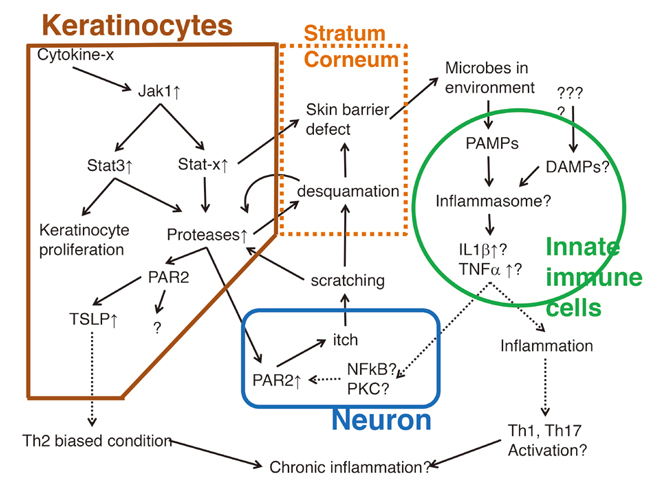Modeling Skin Diseases
Core for Homeostatic Regulation, Core for Precise Measuring and Modeling, Core for Genomic Medicine
The pathogenesis of human diseases is a highly complex process because of the complexity of not only pathogenetic insults and homeostatic responses but also of the structures of organs and tissues that include many cells of different origins. To tackle such complexity, IMS has initiated center-wide collaborative projects to understand the pathogenesis of atopic dermatitis (AD), autoimmune diseases, primary immunodeficiency and others, in which multiple research groups work interactively and synergistically to achieve their common objectives. In each project, the first aim is to understand molecular and cellular networks underlying homeostasis of each organ/tissue. This AD project has been initiated because GWAS data for AD and related diseases and several unique dermatitis model animals are already available. Skin is a complex and highly dynamic organ where there are continuous processes of proliferation, differentiation, migration, and death of cells in addition to constant surveillance by immune and neural systems. This implies that highly integrative efforts, from basic research to clinical applications, are required to model skin homeostasis. In order to unify the expertise of the various IMS laboratories in a coordinated manner, it is important to thoroughly consider project planning with specific milestones. The primary goal in the AD project, and hence the initial milestone, is to use a combined computational and experimental approach to investigate the molecular interaction network leading to the onset of AD, its underlying dynamics and how they play a role in the progression of skin dysfunction in AD.

Figure: Molecular and cellular events preceding atopic dermatitis onset in
mouse skin tissue


